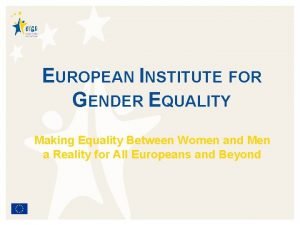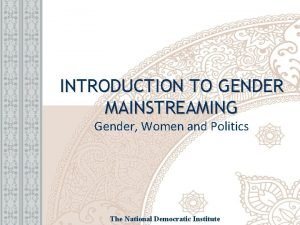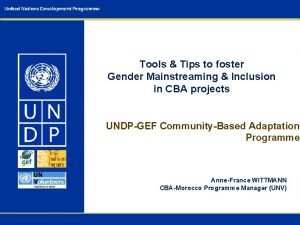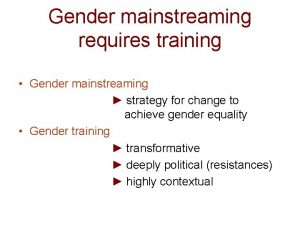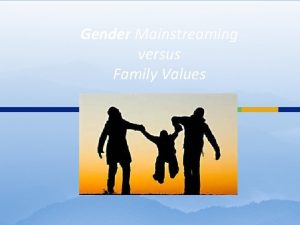GENDER MAINSTREAMING IN SGP GENDER MAINSTREAMING IN SGP



- Slides: 3

GENDER MAINSTREAMING IN SGP

GENDER MAINSTREAMING IN SGP Overview of Gender Mainstreaming in SGP • SGP acknowledges gender differences and supports actions to promote women’s role in the implementation of programs and projects. • Proactive promotion of women-led projects • Mainstreaming gender in all relevant projects. • SGP programme requirements include gender mainstreaming at: ü Project level: Through project proposal template and NSC approval check list ü National level: Country Programme Strategies, NSC gender focal point, M&E use of gender disaggregated data from projects, partnerships ü Global Level: Guidelines, M&E, training and methodology development initiatives, partnerships. ü Selection process for National Coordinators and National Steering Committee members Evaluation findings: • 60 % National stakeholders find SGP selection process includes consideration of gender equality to a great extent • 47 % grants have effectively contributed to gender equality and women’s empowerment. • Actual results on the ground are evident. Half were found to have benefitted women and men equally, or to have disproportionately benefited women. • 52 % of the sampled projects can be considered to have successfully mainstreamed gender

Lessons from gender mainstreaming in SGP projects • Start from the beginning - project concept and design stage, consider diverse roles of men and women • Involve women in leadership roles, not only as participants • Actions speak louder than words – demonstrate benefits, ask women to come up with own solutions • Consider multiple benefits – time, heath, food security, income, and environmental sustainability • Promote asset creation – involve women in innovation, development and maintenance of innovations and technologies • Involve women in dissemination, training, communications – they can be effective advocates • Context is everything – one size doesn’t fit all – challenges to gender participation vary and need to be addressed using local knowledge and solutions
